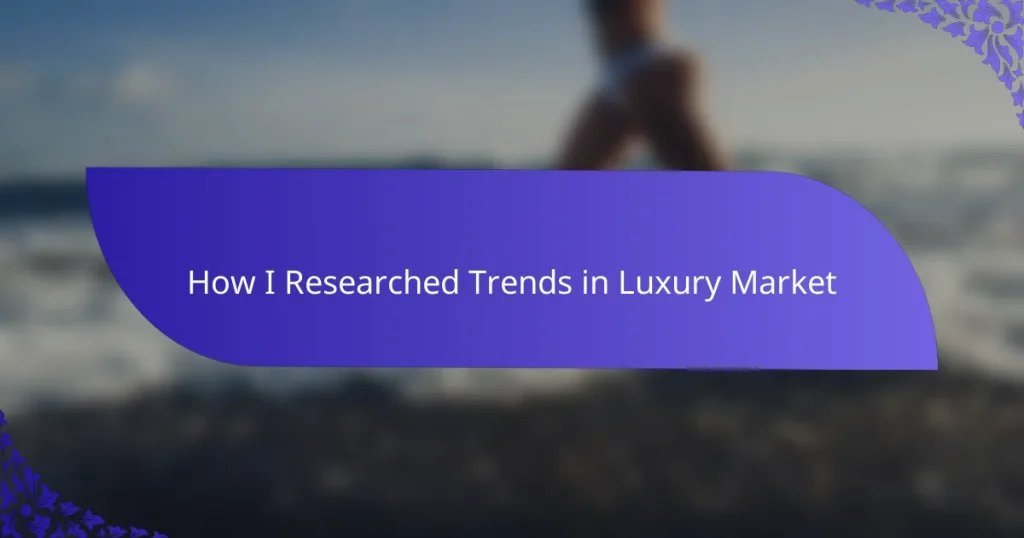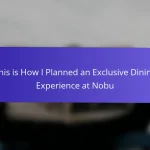Key takeaways
- Luxury trends focus on emotional engagement, sustainability, and personalized experiences rather than just ownership of expensive items.
- Combining quantitative data with qualitative insights from consumer experiences enhances understanding of luxury consumption patterns.
- Tools like Google Analytics and Brandwatch are essential for tracking luxury consumer behavior, offering insights into sentiment and engagement.
- Observing human reactions and blending intuition with data aids in identifying emerging trends in the luxury market.
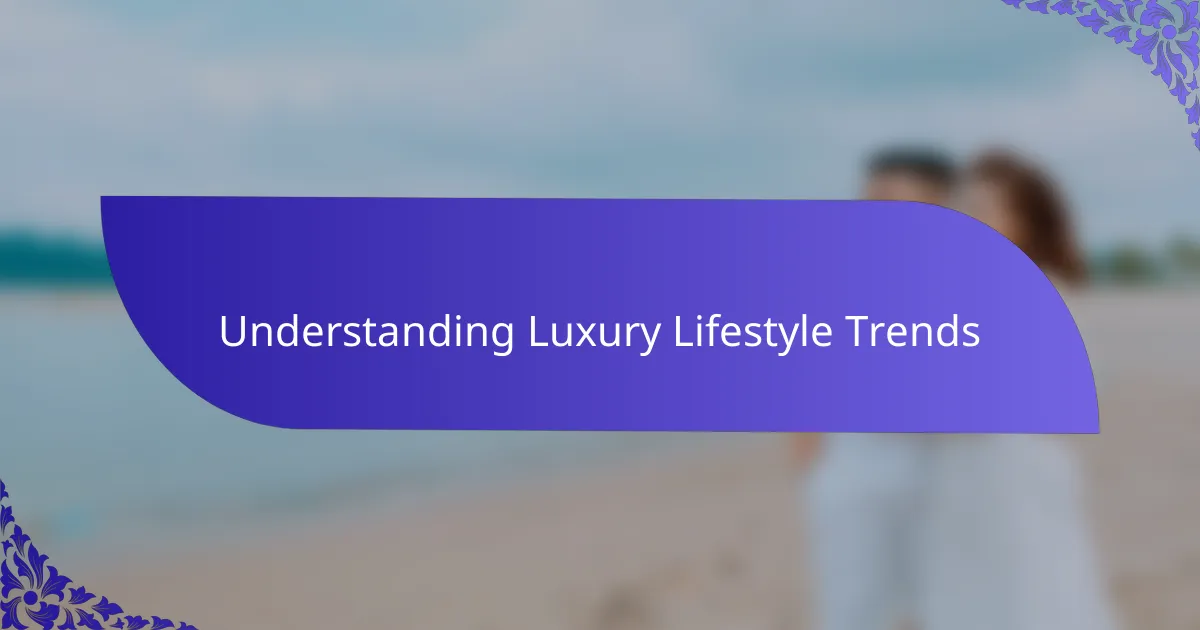
Understanding Luxury Lifestyle Trends
To truly grasp luxury lifestyle trends, I found it essential to immerse myself not just in data, but in the lived experiences of luxury consumers. Observing how people interact with high-end brands and what emotional connections they form revealed patterns that numbers alone couldn’t show me.
I noticed that luxury is no longer just about owning expensive items; it’s about authenticity, craftsmanship, and personalized experiences. This shift reshaped how I approached my research, making me prioritize stories over statistics and prioritize quality over quantity.
Here are the key factors I focused on to understand luxury lifestyle trends:
- Emotional engagement: How luxury brands build deeper connections with consumers
- Experiential value: The rise of bespoke, unique experiences over material possessions
- Sustainability: Growing demand for ethical and eco-conscious luxury products
- Digital influence: Impact of social media and influencers on luxury consumption
- Heritage and craftsmanship: Appreciation for tradition and authenticity in luxury goods
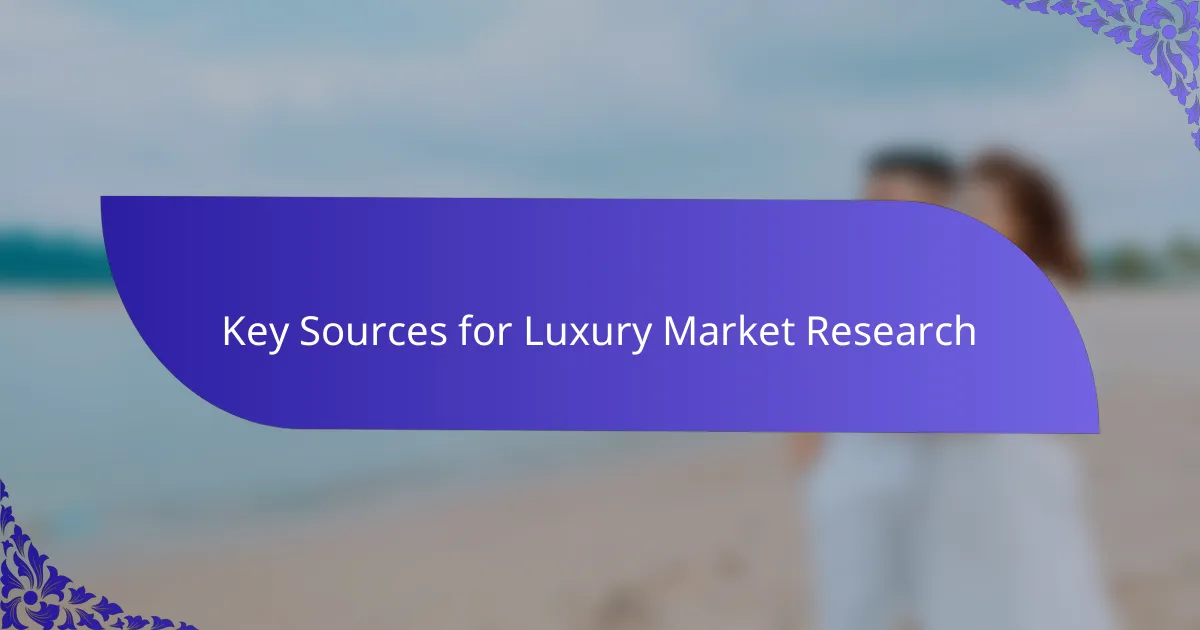
Key Sources for Luxury Market Research
Key Sources for Luxury Market Research have always fascinated me because they reveal the pulse of an exclusive world. From industry reports to consumer behavior analytics, each source has its unique way of unveiling insights. I noticed that combining quantitative data with qualitative interviews brought the most nuanced understanding.
| Source Type | Benefit |
|---|---|
| Industry Reports | Provide comprehensive market size and growth trends, essential for understanding macro shifts. |
| Consumer Surveys | Reveal personal preferences and emerging desires, offering depth to customer insight. |
| Luxury Brand Publications | Give insider perspectives and strategy highlights, often reflecting real-time market adaptations. |
| Social Media Analytics | Track trending discussions and influencer impact, useful for spotting grassroots trend developments. |
![]()
Tools for Tracking Luxury Consumer Behavior
Tracking luxury consumer behavior requires precision and the right set of tools. From my experience, platforms like Google Analytics give a macro-level view of visitors’ interests, while social listening tools, such as Brandwatch, dive deep into sentiment and conversations around luxury brands. I remember uncovering subtle shifts in consumer values by monitoring social chatter that traditional sales data simply missed.
| Tool | Key Features |
|---|---|
| Google Analytics | Tracks website traffic, user demographics, and engagement; provides insights on luxury product interest patterns. |
| Brandwatch | Monitors social media sentiment, brand mentions, and emerging trends among luxury consumers. |
| Euromonitor | Offers detailed market reports and consumer data specifically tailored to the luxury sector. |
| NielsenIQ | Analyzes purchase behavior and retail sales data to understand luxury buying trends. |
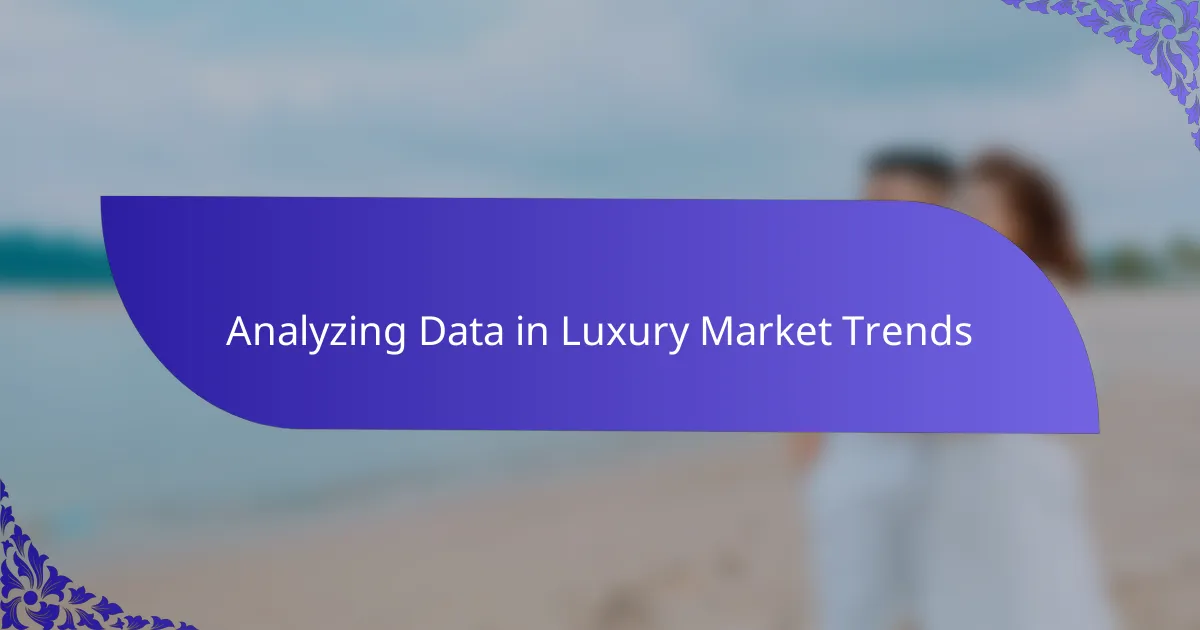
Analyzing Data in Luxury Market Trends
When I dove into analyzing luxury market data, the first thing that struck me was how numbers alone often hide the stories behind consumer choices. I asked myself, what does a spike in sales really mean if it’s not paired with insights on why customers are drawn to certain brands or experiences? That’s why I always cross-reference quantitative data with qualitative feedback; it brings the trends to life.
One challenge I faced was making sense of vast datasets without losing sight of the human element. For example, social media analytics showed me trending hashtags, but it was the sentiment analysis that revealed whether consumers felt excitement, trust, or skepticism toward a brand. I found myself quite fascinated by how emotional undertones shape the trajectory of a luxury trend.
Have you ever wondered how emerging preferences get reflected in raw sales figures? From my experience, combining retail purchase data with digital engagement metrics paints a fuller picture. It’s in this blending of sources that I uncovered subtle shifts—like the growing appetite for sustainable luxury—that might have gone unnoticed if I had relied on just one type of data.
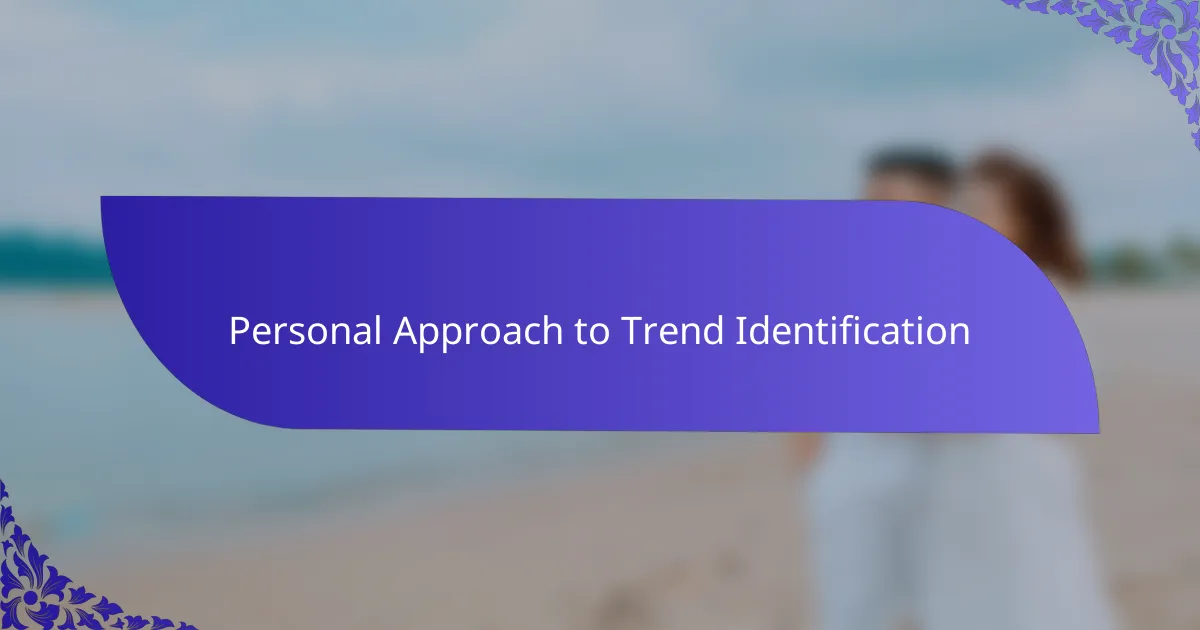
Personal Approach to Trend Identification
I often start trend identification by trusting my instincts, honed through years of close observation and conversations within luxury circles. Have you noticed how certain details—a change in packaging or a whisper of collaboration—can signal something bigger? Those small cues were my first alerts before data confirmed the shifts.
Sometimes, trends reveal themselves in unexpected ways. I recall attending an exclusive launch event where the audience’s reactions told me more than any press release could. Watching genuine excitement and hearing the stories behind purchases helped me understand trends at a deeply human level.
What truly sets my approach apart is blending intuition with hard evidence. It’s like listening to a brand’s heartbeat—not just its numbers—allowing me to capture emerging movements before they become obvious headlines. This balance has been key to uncovering the authentic pulse of luxury trends.
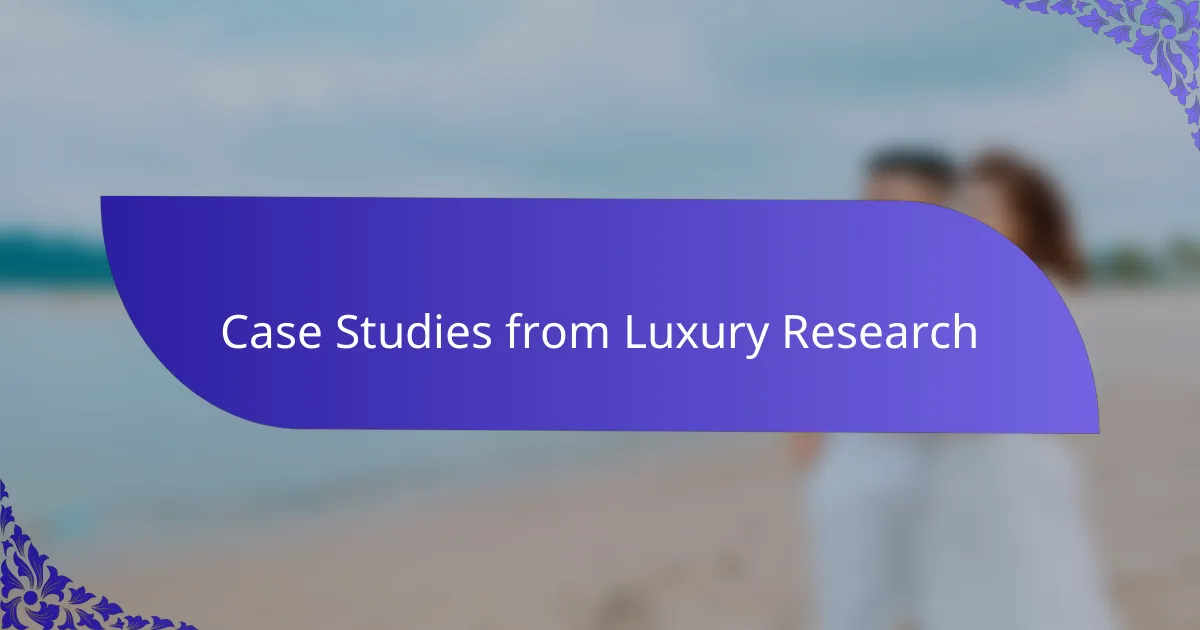
Case Studies from Luxury Research
One case study that stands out for me involved analyzing a heritage brand’s reinvention strategy. Watching how they balanced maintaining craftsmanship with integrating sustainability revealed a complex dance between tradition and innovation. Have you ever seen a brand try to honor its past while boldly reshaping its future? That tension was palpable and taught me that luxury isn’t static—it evolves through storytelling and values.
Another example came from a deep dive into social media sentiment around bespoke experiences. I was surprised by how emotional language flooded customer reviews and influencer posts, highlighting the irreplaceable value of personalized luxury. This made me realize that behind every trend report, there are real human desires looking for meaning and connection—a reminder that data needs a heart.
Finally, I looked at a surprising trend in digital engagement where a younger demographic embraced vintage luxury pieces, challenging assumptions about consumer age groups. Did this mean nostalgia was becoming a luxury trend in its own right? Exploring this case turned my attention to the multi-generational stories within luxury markets and how trends intersect with identity and memory, far beyond mere products.
